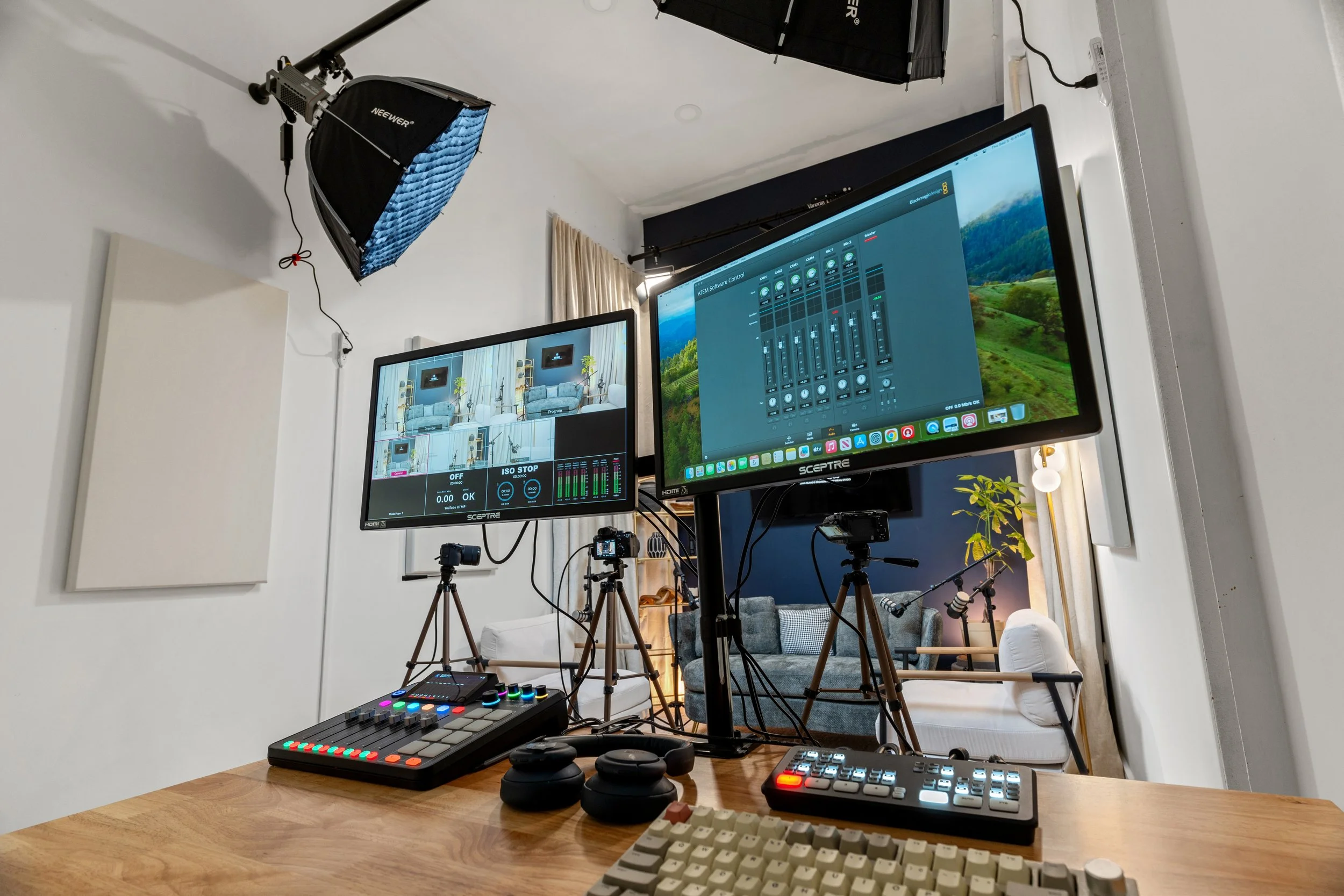Unlocking the Secrets to Successful Podcasting: What You Need to Know
Podcasting has evolved from a niche medium into a powerful communication tool used by brands, entrepreneurs, educators, and storytellers worldwide. With millions of active shows and billions of episodes streamed each year, podcasts offer an accessible way to connect with audiences, share ideas, and build influence.
This guide outlines what is needed to start a podcast, the essential equipment, hosting options, and the step-by-step process for launching and growing a successful show
What Is a Podcast and How It Works
A podcast is an episodic audio program, often focused on a specific theme or topic, that listeners can stream or download on demand. Episodes typically range from 20 to 60 minutes and are distributed through an RSS feed to directories such as Apple Podcasts, Spotify, and Google Podcasts (Wikipedia).
Unlike standard audio files, podcasts are part of a series with a consistent format, branding, and narrative structure. Each episode is usually hosted by a presenter or panel who guides the audience through interviews, stories, or discussions.
Essential Elements for a Successful Podcast
1. Clear Concept and Niche
A successful podcast starts with a well-defined concept and target audience. Selecting a topic with long-term potential ensures the ability to produce consistent content. A unique perspective or underserved niche increases the likelihood of attracting loyal listeners.
Key considerations include:
Has the topic been covered extensively before? If so, can a different angle be explored?
Is there a measurable audience demand for this subject?
Can enough content be developed for multiple episodes or seasons?
2. Choosing the Right Format
The podcast format determines the structure and tone of the show. Common formats include:
Interview-based – Featuring guest experts and industry leaders.
Narrative storytelling – Either fiction or non-fiction, often segmented into acts.
Solo commentary – One host delivering educational or opinion content.
Panel discussions – Multiple hosts or regular guests offering varied perspectives.
A consistent format makes it easier for listeners to know what to expect and for producers to streamline recording and editing.
3. Essential Equipment
High-quality audio is critical for listener retention. Recommended equipment includes:
Microphone: USB or XLR microphones offer clear sound. Dynamic mics are better for non-studio environments, while condenser mics are ideal for soundproof spaces.
Headphones: Closed-back, noise-canceling headphones help monitor audio during recording and editing.
Recording space: A quiet, echo-free room or a treated studio ensures professional sound.
Editing software: Free tools like Audacity or paid options like Adobe Audition and Descript can refine audio quality.
4. Hosting and Distribution
A podcast hosting platform stores episodes and distributes them to listening apps. Popular hosting options include Podbean, Buzzsprout, Libsyn, and Castos.
The process generally involves uploading the episode to the hosting platform, which then generates an RSS feed that sends new episodes to podcast directories automatically.
5. Branding and Creative Assets
Branding helps a podcast stand out in a crowded market. Essential creative elements include:
Podcast name – Memorable, relevant, and easy to search.
Cover art – Compliant with platform specifications, visually appealing, and aligned with the show’s tone.
Intro and outro music – Sets the mood and provides a professional feel.
Episode descriptions – Clear summaries optimized for search engines.
6. Website and Online Presence
A podcast website serves as a central hub for episodes, show notes, transcripts, and subscription links. Optimizing the site for SEO can help attract organic traffic and convert visitors into subscribers.
Websites also provide a platform for cross-promotion, email list building, and hosting exclusive content for members or sponsors.
7. Promotion Strategy
A podcast launch plan should include both pre-launch and post-launch promotion.
Pre-launch strategies:
Create teaser clips and social media countdowns.
Announce the launch date to existing audiences via email or blogs.
Secure podcast handles on major social platforms.
Post-launch strategies:
Share episode highlights and short audio or video snippets.
Encourage listeners to leave reviews to increase discoverability.
Collaborate with other podcasters or appear as a guest on related shows.
8. Tracking and Analytics
Monitoring performance metrics ensures continuous improvement. Key metrics include:
Subscriber count
Episode downloads
Average listening duration
Website traffic to the podcast page
9. Monetization Opportunities
Once a podcast has a consistent audience, it can generate revenue through:
Sponsorships – Partnering with brands for ad placements.
Affiliate marketing – Promoting products with a commission on sales.
Paid memberships – Offering bonus episodes or behind-the-scenes content through platforms like Patreon.
Merchandise – Selling branded products.
Joining a podcast advertising network can also help secure sponsorships, though it may limit control over ad content and revenue share.
From Mic Check to Mic Drop — Let NOM Media & NOM Studios Take You Further
Successful podcasting requires more than recording and uploading audio. It involves strategic planning, technical preparation, consistent promotion, and audience engagement. By following best practices—from concept development to monetization—creators can establish a show that resonates with listeners and stands out in a competitive space.
Want to transform your podcast—or any content—into a powerful growth engine? Book a free 30-minute strategy session with our CEO and get a tailored action plan for your brand. We’ll identify your biggest opportunities, tackle your toughest challenges, and map out a strategy that actually delivers results—no strings attached.
And because we like to overdeliver, when you reach out today you’ll also get our exclusive free guide on How To Start A Podcast packed with proven tips to amplify your reach, boost engagement, and grow your audience. Let’s talk and start turning your content into impact.


